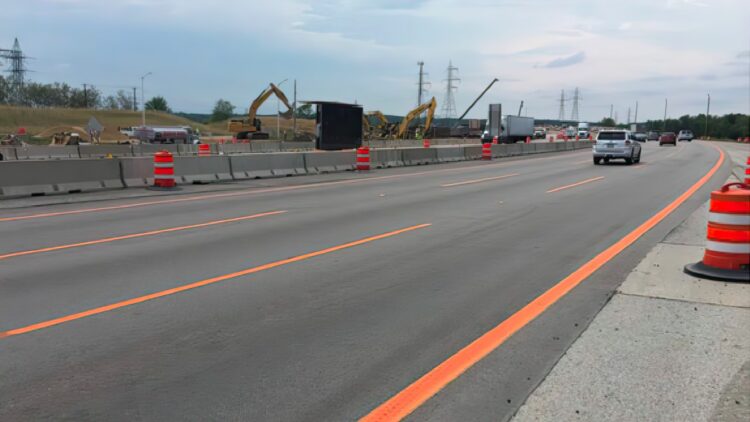When asked to imagine a highway, we immediately think of a long road with white or yellow stripes painted on it. But what if I told you that this color could change very soon? Road markings are as ingrained in our visual memory as traffic lights. However, in the state of California—world-renowned for setting trends—a subtle but radical change has been proposed that could improve traffic.
This experiment has already been tested on a section of Interstate 5 in San Diego County, where authorities have used bright orange flashing paint on the asphalt. Although there are no plans to replace all of the state’s signage at this time, it does appear to be an innovative and necessary safety measure.
This fluorescent orange color is being used to mark temporary construction zones. There is nothing more visually striking to indicate that something is out of the ordinary than painting the road you always drive on a different color.
The Orange Pilot Program
To carry out this unique project, the California Department of Transportation (Caltrans) and the San Diego Association of Governments (SANDAG) joined forces. They decided to paint a section of the interstate that was undergoing expansion work on the north coast corridor. Specifically, they chose approximately four miles on Interstate 5 (I-5), north of San Diego, between Palomar Airport Road and State Route 78.
Roadwork zones are inherently dangerous. There is a high rate of accidents and fatalities because cars do not slow down enough to avoid collisions when they encounter a road worker. When highway lanes are temporarily reconfigured to make room for construction, crews must remove the old traffic lines. This often leaves “ghost lines” that confuse drivers, as they cannot be sure which line to follow.
Orange is the new line
This is where fluorescent orange paint comes in. Painting the new route in this striking color creates an unmistakable contrast, letting drivers know where to go. It is also the color universally recognized in the West for construction, alerting drivers that they are in an area where they need to exercise extreme caution.
This measure not only helps drivers, but also connected and automated vehicles, which rely on road markings to stay in their lane. Not only do they make life easier for humans, but also for modern technology. Ghost lines can guide assistance systems, while vibrant orange provides a clear, unambiguous reference for artificial intelligence.
For now, traffic regulations in the United States only allow white and yellow to be used for standard lane lines, so California had to seek an exemption. The project is now awaiting approval from the Federal Highway Administration (FHWA).
Does this new signage work?
Preliminary results from the interstate signage pilot are very encouraging.
Using such a striking warning color has proven highly effective in capturing drivers’ attention. Approximately 83% of road users reported being more aware that they were traveling through a construction zone. Seventy-two percent of drivers surveyed said they slowed down after noticing the orange contrast on the pavement. Apart from its psychological impact on human drivers, physical visibility is also significantly improved. Three-quarters of drivers indicated that the lines were much easier to see at night.
However, the state of California is not the first to explore creative ways to mark roads. Orange paint has already been tested in Wisconsin, Texas, Kentucky, Indiana, and Washington. For now, it looks like this type of orange signage will begin to be used in construction zones. While highway construction projects are multimillion-dollar undertakings—the North Coast Corridor of I-5 will cost between $887 million and $987 million—a little phosphorescent paint will simply help prevent traffic accidents during construction.

